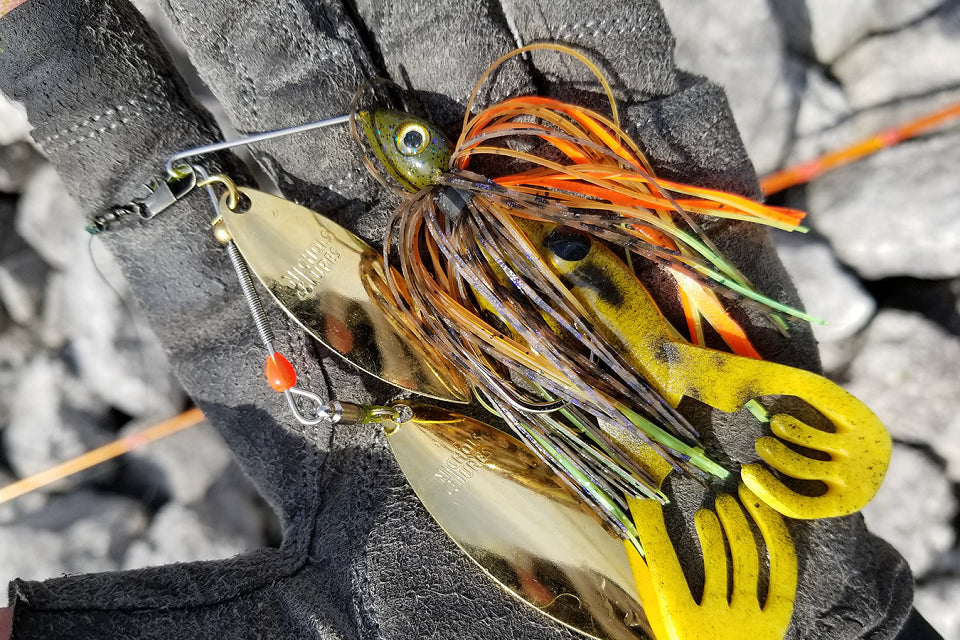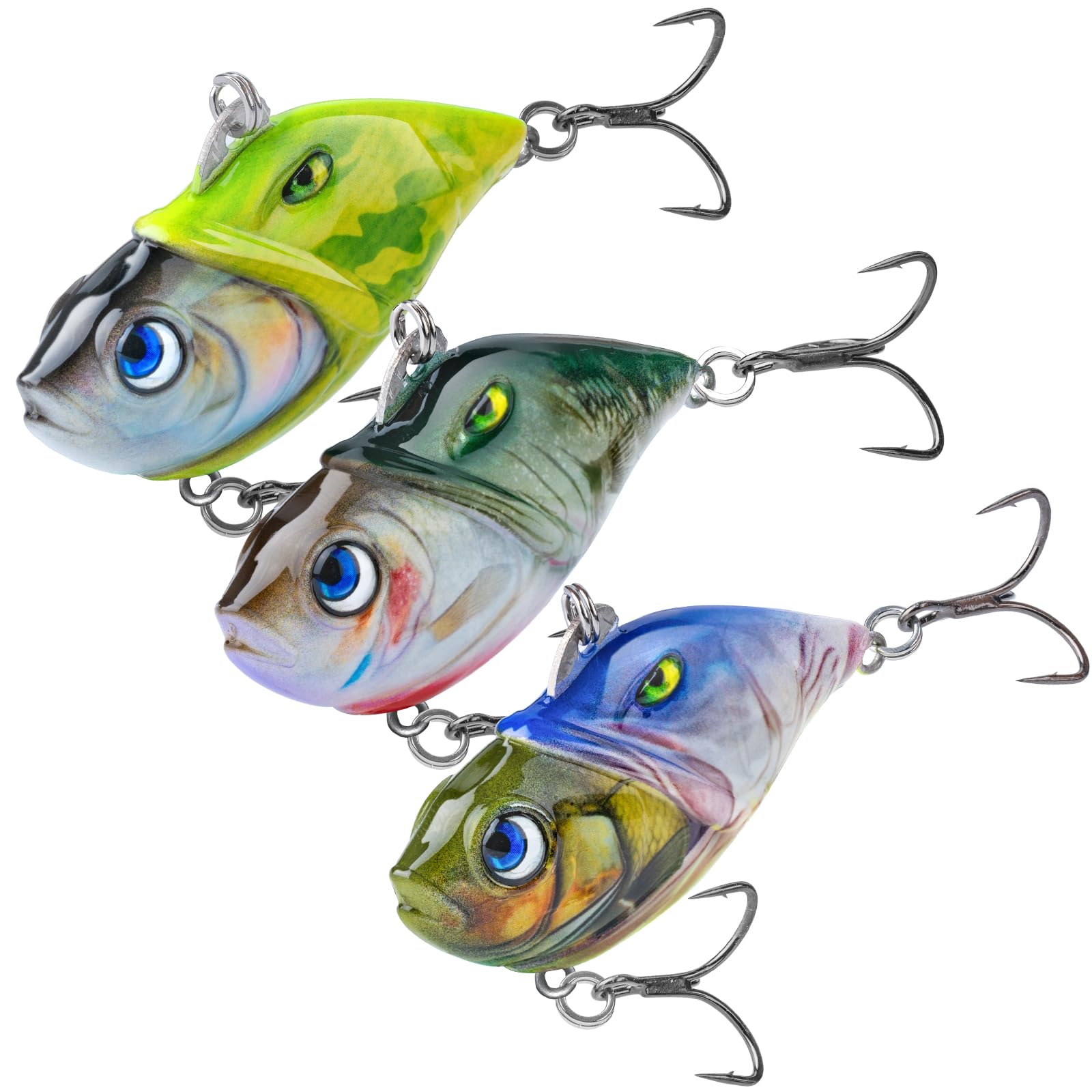The Role of Water Temperature in Choosing Proper Bass Fishing Lures
Discover the most effective Techniques for Selecting Bass Lures for Your Following Angling Trip
Selecting the right bass Lures can dramatically influence angling success. Anglers need to take into consideration different variables, such as seasonal patterns and water quality. Comprehending bass habits is important (Best Bass Lures South Africa). Selecting Lures that simulate all-natural target can lead to much better results. Yet, lots of are unsure about the most effective techniques to carry out. What strategies should one focus on to boost their angling experience? The answers depend on taking a look at specific problems and adapting accordingly
Recognizing Bass Actions and Habitat
Recognizing the nuances of bass actions and environment is crucial for any angler intending to boost their angling success. Bass are typically discovered in different environments, including storage tanks, rivers, and lakes, where they seek framework such as submerged rocks, plant life, and fallen trees. Their habits is greatly affected by water temperature, light levels, and readily available forage.
Throughout warmer months, bass tend to be much more active, typically populating shallower waters, while in cooler months, they pull back to deeper locations. Additionally, bass show patterns of feeding, typically being more hostile during dawn and dusk. They are opportunistic killers, exploiting smaller sized fish, insects, and crustaceans. Recognizing these elements can help fishermens identify prime fishing locations, along with the very best times to fish. Acknowledging bass habits in connection to their habitat is critical for successful fishing, assisting fishermens in making notified choices concerning where to cast their lines.
Matching Lures to Seasonal Issues
As anglers adapt their methods to changing seasons, matching Lures to seasonal problems comes to be a crucial strategy for boosting angling success. In springtime, when bass are emerging from wintertime inactivity, fishermens frequently make use of spinnerbaits and shallow-running crankbaits to imitate the movements of prey. Summer season demands a change to topwater Lures or soft plastic worms, as bass look for color and cooler waters. Throughout the loss, when bass are fattening up before winter months, larger Lures that mimic baitfish can be effective. Winter months requires a much more subtle technique; jigs and slow-moving skill lures frequently yield better results as bass come to be inactive. Recognizing these seasonal patterns assists anglers pick the right appeals, thus raising their possibilities of an effective catch. By lining up appeal choices with the natural behavior of bass throughout the year, anglers can optimize their fishing experience and boost their overall success on the water.
The Importance of Shade Option
Color selection plays a critical role in bass fishing, as it can substantially influence a fisher's success. Factors such as water clarity, seasonal changes, and the particular choices of various bass varieties all affect which colors are most reliable. Comprehending these elements enables fishermens to make enlightened options that enhance their angling experience.
Water Clarity Considerations
When the water clarity varies, choosing the appropriate bass lure shade comes to be crucial for drawing in fish. In clear water, all-natural colors such as shad or bluegill patterns often tend to be a lot more efficient, as they simulate the prey bass are accustomed to seeing. Alternatively, in murky or discolored water, brighter colors like chartreuse or fire tiger can enhance presence, making it much easier for bass to spot the lure. The comparison in between the appeal and the surrounding setting plays a considerable role in angling success. Fishermens ought to likewise take into consideration the moment of day; lighter colors may function much better in intense sunshine, while darker tones can be a lot more reliable throughout low-light conditions. Adjusting lure shade to water clearness maximizes the opportunities of an effective catch.
Seasonal Color Scheme
Just how do seasonal changes affect bass habits and lure effectiveness? As temperatures shift throughout the year, bass readjust their feeding behaviors and favored habitats, making shade choice vital for effective angling. In springtime, when bass spawn, brilliant colors like chartreuse can attract focus. Summer months commonly call for more natural hues, such as eco-friendly pumpkin or shad patterns, as bass seek to mix in with their surroundings. During autumn, dynamic colors like orange and red simulate the altering foliage, attracting bass as they prepare for winter season. In wintertime, suppressed tones such as gray or white might be extra reliable, as bass come to be tired. Inevitably, recognizing seasonal color scheme makes it possible for anglers to select Lures that reverberate with bass's current actions, improving their chances of success.

Species-Specific Preferences
Recognizing species-specific preferences is vital for fishermens wanting to optimize their appeal selection. Various bass types, such as largemouth and smallmouth, display distinct shade choices based on their habitat and feeding behaviors. Largemouth bass frequently choose darker hues, especially in murky waters, where colors like dark and black eco-friendly simulate natural target. In contrast, smallmouth bass are more probable to reply to brighter colors, such as chartreuse and orange, particularly in clear waters. Additionally, water clearness and light conditions can influence these preferences, making it crucial for fishermens to adjust their lure shade appropriately. By taking into consideration these species-specific choices, anglers can enhance their chances of a successful fishing expedition, ultimately boosting their general experience on the water.
Picking the Right Entice Kind for Different Situations
Picking the proper lure kind for different angling situations is vital for success on the water. Fishermens should consider aspects such as water clearness, climate condition, and the bass's feeding habits. For murky water, darker-colored appeals, such as spinnerbaits or jigs, can be reliable, as they create a strong shape. In clear water, natural-colored Lures like soft plastics or topwater baits might lure wary bass.
When fishing in heavy cover, using hefty jigs or weedless gears can help browse with barriers without getting. On the other hand, open water circumstances may take advantage of crankbaits or swimbaits that can cover higher distances. In addition, throughout cooler months, slower-moving Lures often tend to be extra efficient, while warmer problems might ask for faster retrieves. By adjusting attraction selections to particular atmospheres, anglers boost their possibilities of an effective catch.
Explore Size and Activity

Fishermens usually explore a variety of actions and dimensions to identify what jobs best under varying problems. A sluggish, subtle activity could be suitable in cooler water, while a quick, aggressive obtain could be extra reliable in warmer temperature levels. By meticulously observing the bass's reactions to these variations, anglers can improve their strategy and raise their possibilities of a successful catch. Inevitably, the best mix of size and activity can make a considerable distinction on the water.
Checking Out Water Problems for Better Draw Options
Comprehending water problems is critical for choosing the ideal bass appeal. Factors such as water clarity and temperature can considerably influence fish behavior and feeding patterns. By evaluating these problems, fishermens can make informed choices that enhance their chances of an effective catch.
Analyzing Water Clearness
How does water clearness influence the efficiency of bass attractions? Water clarity considerably influences bass habits and the visibility of appeals. In clear water, bass have a tendency to be more mindful, making natural-colored Lures more efficient as they imitate prey you can check here carefully. Fishermens might select lighter, subtler hues to avoid terrifying fish. Conversely, in murky or discolored water, more vibrant and more lively colors attract attention, standing out also in reduced visibility conditions. Furthermore, the kind of lure can vary; slower-moving Lures might work better in clear water, while faster, more aggressive presentations can tempt bass in murkier settings. Understanding the clearness of the water permits anglers to pick Lures that optimize their opportunities of success throughout their angling trips.
Recognizing Water Temperature Level
As water temperature fluctuates, it straight influences bass behavior and their feeding patterns, making it critical for fishermens to take into consideration when picking lures. Usually, bass choose warmer temperature levels, generally between 65 ° F and 75 ° F, where their metabolic process is increased, resulting in enhanced feeding activity. In visit this site right here cooler water, bass end up being inactive and might like slower-moving attractions, such as jigs or soft plastics. Alternatively, throughout warmer months, faster discussions like crankbaits or topwater Lures can be more reliable. Fishermens must also take into consideration seasonal changes; for example, spring warming causes aggressive feeding as bass prepare to generate. By comprehending exactly how temperature influences bass, fishermens can make educated choices on appeal selection, dramatically improving their opportunities of success.
Tips for Organizing and Maintaining Your Tempt Collection
While numerous anglers concentrate on choosing the ideal Lures for their following angling journey, arranging and maintaining an appeal collection is equally essential for boosting efficiency and performance. A well-structured collection enables fishermens to promptly find the Lures they require, reducing time spent rummaging via take on boxes.
To begin, anglers should classify Lures by type-- crankbaits, jigs, or soft plastics-- making it simpler to find details choices. Making use of tackle trays or boxes with flexible areas can help maintain whatever arranged. Classifying containers streamlines the procedure better, aiding fast recognition.
Regular upkeep is likewise crucial; anglers need to examine Lures for indicators of wear, such as rusted hooks or damaged paint, and change them as necessary. Cleaning Lures after each journey stops wear and tear and makes sure long life. By applying these business and upkeep approaches, anglers can improve their angling experience and ensure their Lures are constantly in ideal problem.
Frequently Asked Concerns
What Are the Finest Brand Names for Bass Lures?
The finest brands for bass Lures include Rapala, Strike King, and Berkley. These brand names are renowned for their efficiency, development, and high quality, interesting both novice and knowledgeable fishermens seeking successful angling experiences.
Exactly How Many Lures Should I Tackle a Journey?
A typical fishing expedition ought to consist of around 5 to ten lures, enabling flexibility while preventing clutter. This option needs to include various kinds and shades to adjust to changing conditions and fish preferences.
Can I Make My Own Bass Lures?
Yes, individuals can make their own bass Lures making use of different products and strategies - Bass Fishing Lures. Crafting Lures enables modification, enabling anglers useful reference to experiment with shapes, shades, and dimensions to fit details angling problems and preferences
What's the Typical Lifespan of a Bass Lure?
The typical life expectancy of a bass appeal varies, generally lasting from a few months to numerous years, depending upon worldly quality, usage frequency, and ecological problems. Appropriate care can substantially extend an appeal's use.
Exist Details Lures for Night Angling?
Yes, there are particular Lures created for evening angling. Dark colors and Lures that create resonances, such as spinnerbaits or jigs, typically attract bass in low-light conditions, improving presence and triggering predative instincts.
Alternatively, in dirty or tarnished water, brighter shades like chartreuse or fire tiger can improve visibility, making it much easier for bass to discover the attraction. Bigger Lures can attract bigger bass, while smaller Lures might be extra efficient for catching smaller fish. Additionally, the type of appeal can differ; slower-moving Lures may function better in clear water, while quicker, more aggressive discussions can lure bass in murkier atmospheres. As water temperature level changes, it straight affects bass actions and their feeding patterns, making it critical for fishermens to think about when picking appeals. While many anglers concentrate on selecting the ideal Lures for their following angling journey, preserving a lure and arranging collection is just as crucial for boosting effectiveness and efficiency.